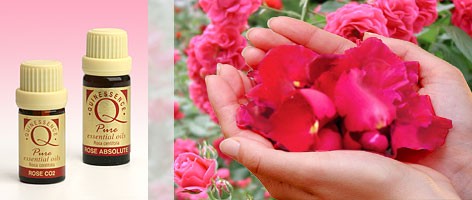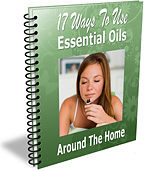
What are Absolutes
The delicate nature of many flowers means that steam distillation can not be used to extract the fragrant oil because the intense heat destroys the flowers, causing them to become compacted into a solid mass that steam is unable to penetrate. If the steam is unable to move freely through the flowers during distillation it is impossible to extract the oil.
Even where special apparatus has been developed to assist the penetration of steam, the very high temperatures needed to produce the steam will often have a negative effect on the aroma of the oil that is extracted. So with the exception of a few oils such as neroli and rose otto, steam distillation is usually unable to capture a true representation of the flowers fragrance, often producing an oil that is totally unlike the aroma of the original plant. Obviously, this is not ideal.
To address this problem a special process was developed that does not damage the delicate flowers and captures far more of the flowers true aroma than is possible with steam distillation. In addition, because this process does not use any heat or water, none of the important water-soluble aromatic compounds are lost as they are in steam distillation. This means a higher yield is obtained from a crop when producing absolutes rather than extracting the oil by steam distillation.
How are absolutes made?
In the first stage of the process the plant material is placed in a cylindrical drum along with an organic solvent, usually hexane or toluene. The drum is rotated to aid the absorption of the solvent and to separate the odiferous extract, and this extract is then subjected to vacuum distillation to remove the solvent which can then be recycled. The aromatic material obtained after this first process is known as a concrète or resinoid, depending if the extract is waxy or resinous.
Concrètes and resinoids are used in a wide range of industries, but specialist knowledge is required to use them because they are very difficult to work with due to their thick, heavy consistency. This is why concretes and resinoids (with the exception of benzoin) are rarely used in aromatherapy.
The second stage in this process involves using ethanol (alcohol) to separate the aromatic compounds from pigments and waxes, which are usually present in the extracted material if it is derived from a flower or herb. Many of these waxes have little aromatic value and make the oil difficult to use due to their insolubility, although these waxes are useful in skin care products. After being chilled, the waxes and non-odiferous materials become separated and are removed, the remainder is filtered, and finally the alcohol is recovered using vacuum distillation.
Heavier consistency
When an aromatic oil is extracted this way the oil is referred to as an absolute rather than an essential oil, and its fragrance is far more concentrated than an oil obtained either by steam distillation or cold expression. Absolutes are often much thicker in consistency than essential oils too, and many need warming to make them mobile enough to pour out. Some absolutes are so viscous that they set completely at the bottom of the container, but simply placing the bottle in warm water for 10 to 15 minutes will get the oil flowing properly.
Closer to nature
When extracted expertly, an absolute will contain far more of the aromatic principles of the flower than its steam distilled counterpart which is why it smells closer to nature. Because of this, many popular herbs and spices such as basil, cardamon, clary sage, clove bud, geranium, ginger, lavender and peppermint are also extracted using this process and are often the preferred choice for manufacturers in some industries.
Because absolutes are so concentrated they usually overpower the untrained nose and need diluting before they once again smell like the herb or flower they were extracted from.Few aromatherapy students can identify the aroma of undiluted rose absolute when first introduced to it because it completely overwhelms their olfactiry system. Fortunately, the human brain quickly adapts and with practice the aroma soon becomes recognizable.
Examples of other absolutes of a floral or leafy nature used in aromatherapy include champaka, jasmine, mimosa, orange flower (neroli), tuberose, violet leaf and ylang ylang. If you are not already familiar with these fragrant delights you may well wonder why you have not heard or read more about them, especially if they smell so good. There is a simple answer to this question . . .
Bad press
Unfortunately, absolutes have acquired a bit of a bad reputation in aromatherapy due to misinformation being recycled in books and on the net. The concerns are related to the solvent and alcohol residues left in absolutes which are claimed to be unacceptably high for use in aromatherapy. However, this issue dates back to the late 1950’s when this process was still in its infancy and quality standards were a great deal lower, as pointed out by experts at that time such as Steffan Arctander (Perfume and Flavour Materials of Natural Origin, 1961).
The world was a very different place back in the 1950’s, especially when it came to extracting oils, and notions of ‘quality’ and ‘purity’ were not the same as in today’s ethically-aware society. At that time benzene was often used as the solvent for producing absolutes (plus many other things), but today it is known to be a carcinogen and its use is highly restricted. When manufactured correctly today using safer solvents, any residues remaining in absolutes should be in the order of around10 parts per million. This means that when they are diluted down to their correct level at around 1%, any residues will be diluted down to parts per trillion!
Perhaps it could be argued that poor manufacturing standards may result in unacceptably high levels of residues, but it should be noted that because many absolutes are permitted food flavourings the levels of residues are strictly monitored to meet FDA, EEC and WHO regulatory controls. In any case, solvents are very expensive and manufacturers are more than keen to recapture every last drop of them for recycling, so there really is no incentive for them to leave residues of any kind in the product. Of course, analytical testing with GC/GCMS helps reveal unwanted residues.
Sense of proportion
Others have cited alcohol residues as a reason to avoid the use of absolutes in aromatherapy, but a sense of proportion would be helpful here. There are thousands of skin care products that contain alcohol and far worse ingredients at much higher levels therefore common sense should rule when debating these issues. Regulations for the food industry are generally far more stringent than those applied to cosmetics, so if absolutes are permitted as food additives they should be perfectly safe on the skin provided they are of a good quality.
If you still feel unsure about using absolutes on the skin, remember that of course they are great when vaporised to help address a wide range of emotional conditions. Many experienced aromatherapists have found that absolutes are more effective than essential oils on emotional states and prefer to use them for this purpose.
Absolutes really do offer a wonderful way to recapture floral fragrances more accurately, and it always seems a pity for people not to enjoy the benefits due to misinformation. Whilst there are several other methods of extracting essential oils that do not use solvents, the cost of the specialist equipment required is much more expensive and this drives up the cost of the final product.
Until such time that prices begin to fall for oils produced by these other methods of extraction, nothing else comes close to the value for money that absolutes offer lovers of aromatherapy when it comes to floral extracts. Don’t let the recycled, outdated misinformation still circulating in aromatherapy deter you from enjoying their many therapeutic benefits.
Copyright © Quinessence Aromatherapy Ltd 2005. Written by Geoff Lyth
If you enjoyed this article, please click the 'Like' button and help spread the word:
Next About Carrier Oils
See also Quinessence Absolute Oil Range


